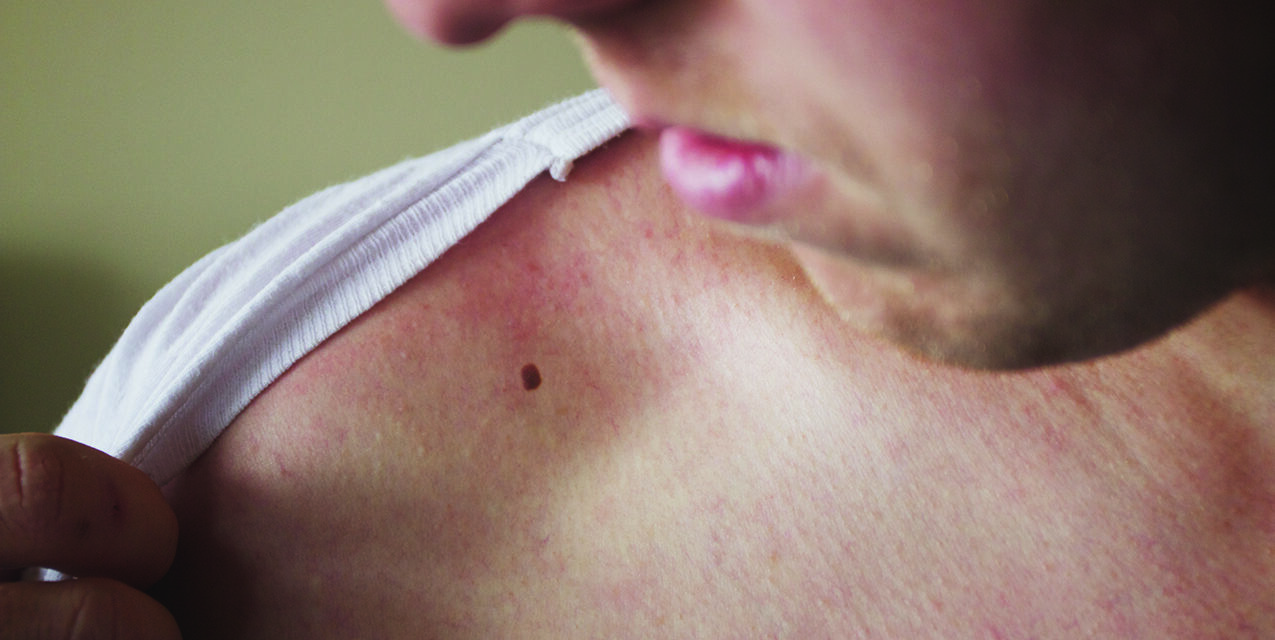Melanoma is a type of skin cancer that affects melanocytes, or the cells that produce the skin pigment melanin. The U.S. Centers for Disease Control and Prevention says that the sun’s UVB rays stimulate melanocytes, and more than 90 percent of melanomas are thought to be caused by ultraviolet exposure. Melanoma can exhibit different symptoms depending on the part of the body it is affecting, and may not affect everyone in the same way. The following are some of the signs and symptoms of melanoma.
- A new spot on the skin that changes in shape, size or color.
- A spot or mole that looks different from the other moles or spots on the skin (known as the ugly duckling sign).
- A sore that doesn’t heal.
- Spreading of pigment from the border of a spot into the surrounding skin.
- Changes in sensation in the skin, such as itchiness, tenderness or pain.
- Changes in the surface of a mole, whether bleeding, oozing or scaliness.
- A dark line beneath the nail bed.
- The presence of hard or swollen lymph nodes.
- A hard lump on the skin.
- Unexplained pain, weight loss, or fatigue.
- Ocular melanoma, or melanoma that occurs in the eye, may be difficult to see without a professional eye exam. Enlarged blood vessels in the eye could indicate the presence of a tumor.
Any symptoms, however benign they may seem, should be brought to the attention of a doctor who can determine if melanoma is present. The Melanoma Research Alliance says there is now a 98 percent five-year survival rate for stage 0, I, and II localized melanoma.












